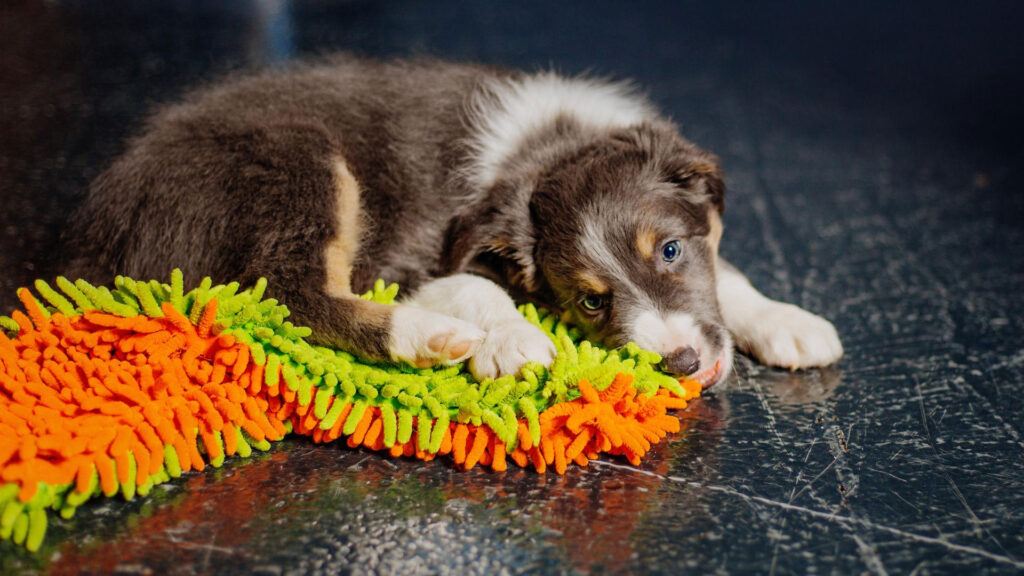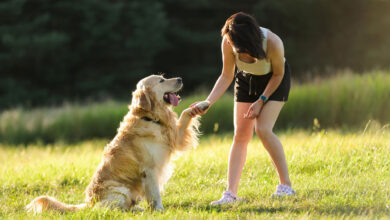Have you ever watched your pet and wondered, “What are they thinking?” Pets, like people, have their own ways of communicating. Understanding our pets can be fun and also helps us take better care of them. Today, we’re going to explore some common pet behaviors and learn how to deal with them. Understanding pet behavior: common issues and how to address them is key to a happy relationship with your four-legged pals. For instance, if your dog is chewing on everything, they might need more toys or exercise. Cats scratching furniture usually means they’re marking their territory or need a scratching post. When your pet stares at you, they could be showing love or asking for something like food or playtime. Remember, each pet is unique, so paying attention to these signs can make a big difference in how you connect with them. Let’s dive in!
Why Do Pets Act the Way They Do?
Have you ever watched your pet and wondered, “What’s going on in that furry head?” Just like us, our pets do things for specific reasons. They might be trying to tell us something important, like if they’re hungry, afraid, or in the mood for some fun. By keeping an eye on their actions, we can uncover a lot about their needs and desires.
Communication Through Actions
Pets can’t talk the way we do, but they have their own special ways of getting messages across. A dog wagging its tail usually means it’s happy, while a cat might purr when it’s feeling content. When our pets are feeling upset or threatened, they might growl or hiss. These are their tools for saying, “Hey, I’m feeling a certain way!”
Understanding Their Needs
Just like you might grab a snack when you’re hungry, pets have signals for their needs too. If your pet is pacing by the food bowl or meowing at the pantry, they’re probably hungry. If they hide or tuck their tail, they could be scared. Recognizing these signs helps us take better care of them.
Playtime and Exercise
When pets are bouncing around or bringing you their favorite toy, they’re not just being cute—they’re asking to play! Playing is super important for pets because it keeps them fit and sharp. Plus, it’s a fun way for us to bond with them.
Healthy Habits
Understanding your pet’s behavior is key to keeping them healthy and happy. If they’re acting in new or odd ways, it might be a sign they don’t feel good. Always keep an eye out for changes and talk to a vet if you’re worried.
Patience and Care
Learning what your pet’s actions mean takes time and patience. Remember, every pet is unique, so their ways of communicating might be different. Show them love and care, and you’ll become an expert in no time!
By tuning into our pets’ behaviors, we become better pet parents. We learn to meet their needs, keep them in good health, and strengthen our bond with our furry friends. So next time your pet does something quirky, take a moment to think about what they might be trying to say!
Why Do Pets Chew on Furniture?

Have you ever come home to find your favorite chair leg chewed up? Chewing is a natural activity for pets, especially for puppies and kittens who are teething. It helps them ease the pain in their gums. For older pets, it’s a way to keep their jaws strong and teeth clean. But, sometimes, they chew out of boredom or anxiety. To help them, offer plenty of chew toys, and spend more time playing or exercising with them to burn off energy.
Understanding Excessive Barking
Barking is a dog’s way of communicating. They might be saying “hello” to a friend or warning you of a stranger. However, if your dog barks all the time, it could be because they’re excited, seeking attention, or sensing a threat. Sometimes, they bark because they’re left alone too much. To address this, teach your dog quiet commands and give them attention when they’re calm. Providing mental stimulation with puzzle toys can also keep their minds busy and reduce barking.
Scratching: More Than Just Claw Care
Cats love to scratch, and it’s a healthy habit that helps them shed the outer layer of their claws, stretch their bodies, and mark their territory. When they scratch furniture, it’s not to make you mad. They might need a better scratching post or more of them around the house. Place scratch-friendly options near the areas they scratch most and reward them for using these spots. This way, your cat gets to scratch, and your furniture stays safe.
Spotting Stress in Your Furry Friend
Sometimes, when pets chew, bark, or scratch more than usual, it can be a sign they’re stressed. Changes in the home, like a new person or pet, can upset them. Watch for other signs of stress, like hiding more often or changes in eating habits. If you think your pet is stressed, create a calm space for them and stick to a regular routine. If things don’t improve, a vet or animal behaviorist can offer more help.
By paying attention to these behaviors and the reasons behind them, you can create a happier home for your pets. Always approach these situations with patience and remember that each pet is unique in how they express themselves and what they need from you.
How to Help Your Pet Be Their Best
Why Pets Misbehave
Pets are a lot like us; they have needs and feelings. When they chew shoes or bark loudly, they aren’t trying to be naughty. They might be bored, have tons of energy, or feel anxious. It’s like when you’re so full of energy that you can’t sit still. Pets need to let out their energy too, and it’s up to us to help them find the right way.
Exercise: The Key to a Happy Pet
Just like how you feel great after playing outside, pets also need to move around. Taking your dog for walks, playing fetch, or setting up a fun obstacle course in your backyard can make a big difference. For cats, try toys that get them jumping and running, like a laser pointer or a feather wand. This way, they can be healthy and less likely to get into trouble.
Brain Games for Smart Pets
Exercise is great, but pets also need to flex their brain muscles. Teach them new tricks, give them puzzle toys, or set up treasure hunts with their favorite treats. This keeps their minds sharp and gives them interesting challenges to solve. Plus, it’s a blast to watch them figure things out!
Love and Attention: A Must for Pets
Pets need our love just as much as we need theirs. Spending time with your pet, petting them, or simply talking to them can strengthen your bond. It’s important to show them affection and let them know they’re a big part of the family. When they feel loved, they’re more likely to listen and behave.
Patience and Positive Training
When you’re teaching your pet, remember that patience is your best friend. They might not get it right away, and that’s okay! Use treats and happy words when they do something good. This helps them understand what you like. It’s like getting a gold star in class; it feels good and makes you want to do it again.
What Not to Do
Yelling or punishing your pet can scare them and even make them behave worse. Always be gentle and kind. If you get frustrated, take a deep breath and try again later. It’s important to build trust with your pet, and being harsh breaks that trust. Think about how you’d want someone to teach you something new—with kindness, right?
Remember, every pet is unique, and what works for one might not work for another. Pay attention to your pet’s needs and be willing to try different things until you find what makes both of you happy. It’s all about teamwork and having fun together!
Training Tricks for Happy Pets
Teaching our furry friends basic commands is a bit like teaching a child to tie their shoes. It might take a little patience, but once they’ve got it, they’ve got it for life. Training is how we communicate with our pets to help them understand what we expect from them. Whether you have a playful puppy or a curious kitten, training is key to a harmonious home.
Start with something simple, like the command ‘sit’. Hold a treat above your pet’s head and say ‘sit’ clearly and calmly. When their bottom touches the ground, give them the treat and lots of praise. Repeat this process a few times each day. Before long, your pet will be sitting on command, even without the treat. Remember, consistency is your best friend – just like your pet!
The command ‘stay’ can keep your pet safe and out of trouble. Begin by asking your pet to sit. Then, open your hand in front of you, say ‘stay’, and take a few steps back. If they stay put, reward them with a treat and affection. If they move, it’s okay – just try again, and be patient. Practice this command regularly, and gradually increase the distance and time before you reward them.
Remember, every pet learns at their own pace. Just like people, they have good days and bad days. If your pet seems distracted or restless, it might be best to try training another time. Always end training sessions on a positive note, with a treat or a cuddle, so your pet associates training with happy times.
Lastly, always use a happy and encouraging tone when giving commands. Pets are very good at picking up on our emotions. If we’re happy and positive, they’re more likely to be excited about training. After all, the goal is to have a well-behaved pet who is also a happy pet.
With these tips, training should be a fun and rewarding experience for both you and your pet. Keep sessions short, sweet, and full of praise. Your pet will be eager to learn and please you, leading to a stronger bond between you both.
When to Seek Expert Advice
Have you ever noticed your furry friend acting strangely? Maybe your cat has started to hide more than usual, or your dog is barking at things you can’t see. It’s natural to feel a bit lost when pets act out in ways we don’t understand. Remember, it’s perfectly fine to ask for help. Experts like veterinarians (vets for short) and animal behaviorists have spent years studying pets and their habits. They’re like detectives for animal actions!
Let’s say your parrot has started screeching non-stop, or your bunny isn’t eating like it used to. These could be signs that something’s not quite right. Vets can check if your pet is feeling sick, which might be causing the odd behavior. On the other hand, animal behaviorists look at the way your pet acts to figure out what’s going on in their furry heads. They understand that animals can’t use words to tell us what’s wrong, so they use their actions instead.
Imagine you’re trying to build a tricky LEGO set without the instructions. It’s frustrating, right? That’s how it feels when we can’t solve our pet’s behavior puzzles on our own. Seeking expert advice is like getting that instruction manual. The experts can give you the steps to help your pet feel better. They might suggest new games, changes in routine, or even special training sessions. It’s all about finding the best way to keep you and your pet happy and healthy.
So, if your pet’s behavior has you scratching your head, don’t wait too long. Reach out to your local vet or look for an animal behaviorist. They’re there to help you and your pet get back to playing and cuddling without worries. Remember, asking for help is a sign of good care, and it’s the best way to show your pet you love them!
Patience and Love: The Key to Understanding
Just like making friends at school, getting to know your pet takes time. Be patient and show them lots of love. The more we understand our pets, the happier and healthier they’ll be. And that makes for a happy home for everyone!




